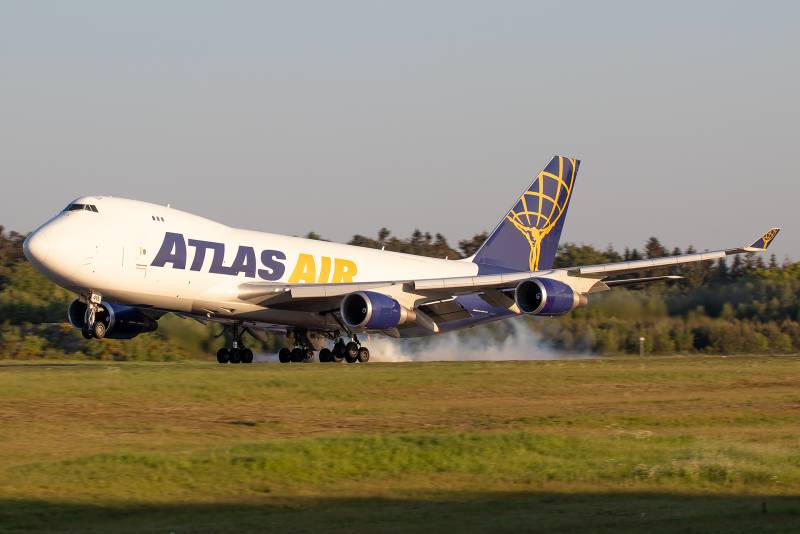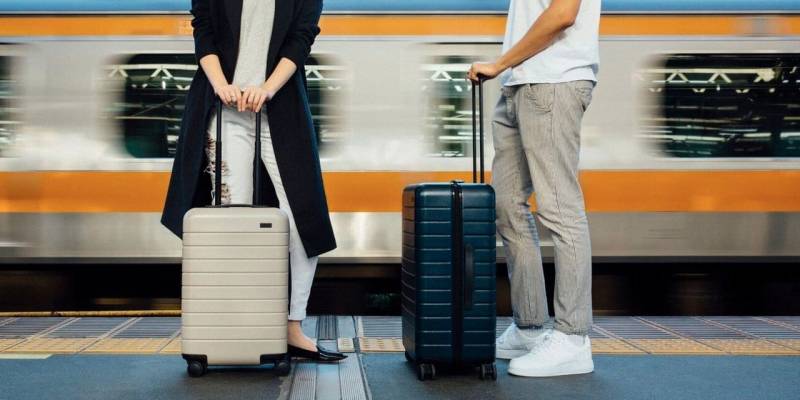Skift Take
Some of the pandemic's long-term economic effects are yet unknown. But one thing is certain: A consumer shift toward e-commerce accelerated and is most probably lasting. And air cargo companies are cashing in on the change.
Air cargo airline Atlas Air’s billion-dollar quarter was more than just a bonanza for its shareholders. It illustrates the way global trade changed during the pandemic and continues to evolve. And it answers a more basic question: Will your holiday gifts arrive on time?
The short answer is no, they probably won’t. Atlas, and other air shippers like it, are cashing in on a set of factors that no one saw coming early in the pandemic, but the sector can’t supply the lift needed to keep the global supply chain humming.
The pandemic accelerated a structural shift in retail toward e-commerce. Populations stuck at home and prevented from shopping in grocery stores, malls, and other retail shops turned to e-commerce for daily necessities during lockdowns. And once those lockdowns ended, the habit stuck. Couple this with almost unprecedented savings among the world’s middle classes, and the usual shipping lanes buckled.
And this is occurring as the global economy starts to heat back up. Manufacturers ran down inventories of raw materials and spare parts during the pandemic and are restocking to feed growing demand.
On top of that, maritime shipping found itself almost completely unprepared for the surge in demand. U.S. West Coast ports are jammed, with record numbers of container ships at anchor outside the ports of Long Beach, Los Angeles, and Oakland waiting for berths. This isn’t the only vulnerability: The closure of the Suez Canal for several days due to the grounding of the Ever Given container ship earlier this year also proved the fragility of the supply chain and cost billions in lost trade; and Covid-19 continues to wrack the supply chain by periodically shuttering key ports in China and elsewhere in Asia.
Adding to the mess is a shortage of truck drivers and warehouse capacity in the U.S., so even when goods eventually are offloaded at ports, there’s no guarantee they will get to their destinations on time. And on top of that, a global shortage of shipping containers means shippers are struggling to get their goods onto ships.
Maritime shipping’s bottlenecks are causing a mode shift to air cargo, especially now that air freight costs only five times as much as maritime, compared with 12 times more before the pandemic, International Air Transport Association (IATA) data show. Before the pandemic, perishable cargo, like fresh flowers, fruit, and seafood, went by air, as did lighter, high-value goods like electronics and microprocessing chips. Now, with maritime shipping’s constraints, goods that ordinarily would have gone by sea are moving by air. And e-commerce packages, typically small and lightweight, are ideally suited to air shipment
But it’s not all boom times for air cargo. Most air cargo isn’t carried by freighter aircraft. Instead, the majority is carried in the belly-holds of passenger aircraft, alongside passengers’ luggage. International passenger demand collapsed in April 2020 and only now is starting to show signs of life. Airlines around the world quickly pivoted to convert some of their larger passenger aircraft into temporary freighters (giving rise to the ungainly portmanteau of “preighters”), with United Airlines along operating about 10,000 cargo-only flights during the pandemic. This threw airlines a lifeline when passengers weren’t flying. But even this wasn’t enough. IATA data reveal that although air cargo demand has risen almost 10 percent over 2019, supply, or “capacity,” has fallen by an equal amount compared with 2019.
Enter air cargo companies like Purchase, NY-headquartered Atlas. “I’m not suggesting things aren’t going to moderate,” its CEO John Dietrich said on the company’s recent earnings call. “They will eventually from where we are today, but we feel good about the long-term prospects.” Before the pandemic, belly-hold cargo accounted for about half of all long-haul freight capacity, but now more freight is carried on dedicated freighters, a trend Dietrich believes will continue. And consumer behavior has shifted decisively toward e-commerce. Even if shoppers return to brick-and-mortar stores, retailers will need to move goods quickly to meet demand, Dietrich said.
Moreover, the nature of passenger networks may have changed toward more point-to-point service, which is less optimized for air freight than hub-and-spoke networks, Dietrich said. More passenger service relies on the Boeing 787, which is designed for point-to-point flights. These two trends could shift even more cargo to companies like Atlas, Dietrich said. “We’re watching it very closely.”
Airlines like U.S. leisure carrier Sun Country and regional airline Mesa Air Group are rushing to buy freight aircraft, as are legacy airlines like Lufthansa and Qatar Airways. Even shippers are getting in on the game, like maritime behemoth Maersk, are ordering air freighters. Atlas will have to compete with new entrants like Maersk, but Dietrich took it as a sign of the overall strength of the air cargo business. Demand outstrips supply currently, and he sees no reason for this to abate soon.
“Atlas Air will continue to capitalize on excess airfreight demand in [the fourth quarter], with management guiding to nearly $1.1 billion in revenue,” Cowen & Co. Helane Becker said in a note to investors.
So given the shift to air freight, why won’t goods arrive in time for the holidays? It’s a matter of scale. One Boeing 747-400 cargo aircraft can carry about 142 U.S tons of freight. By comparison, a 20-foot equivalent cargo container — the maritime and road freight standard — can be loaded with a maximum of about 23 U.S. tons. And the largest container ships can carry almost 24,000 20-foot equivalent containers. In other words, consumers are advised to shop early.
SOURCE : skift




